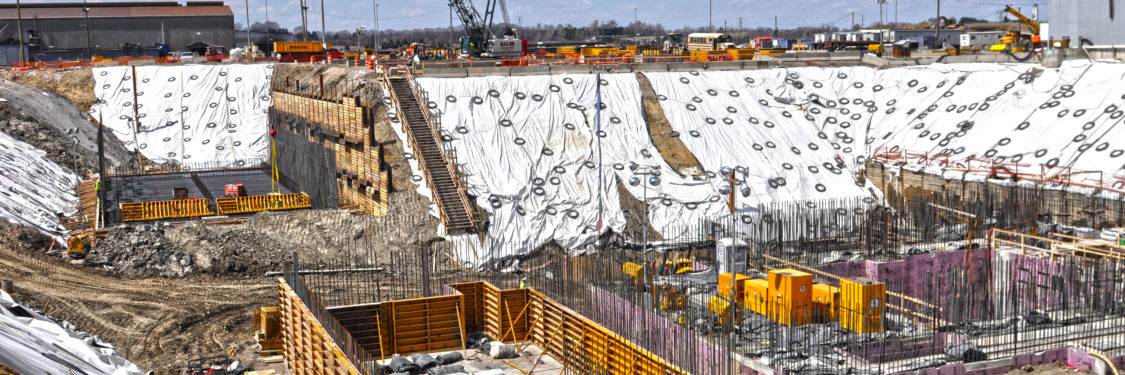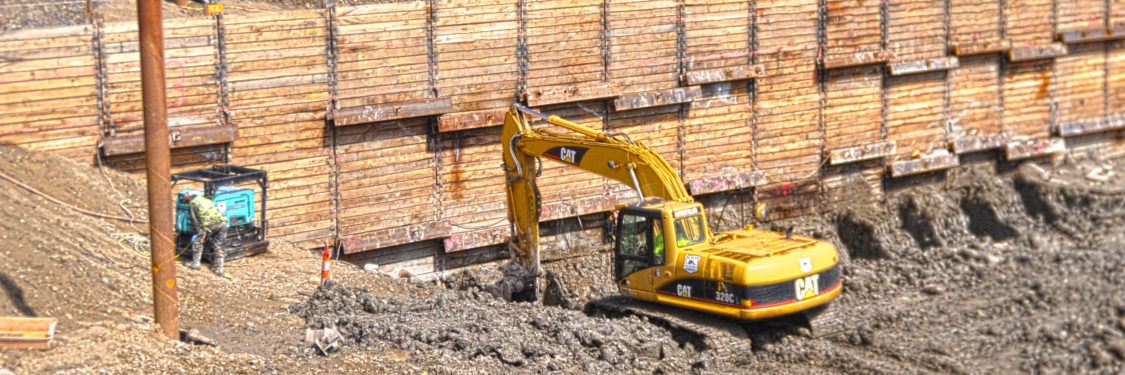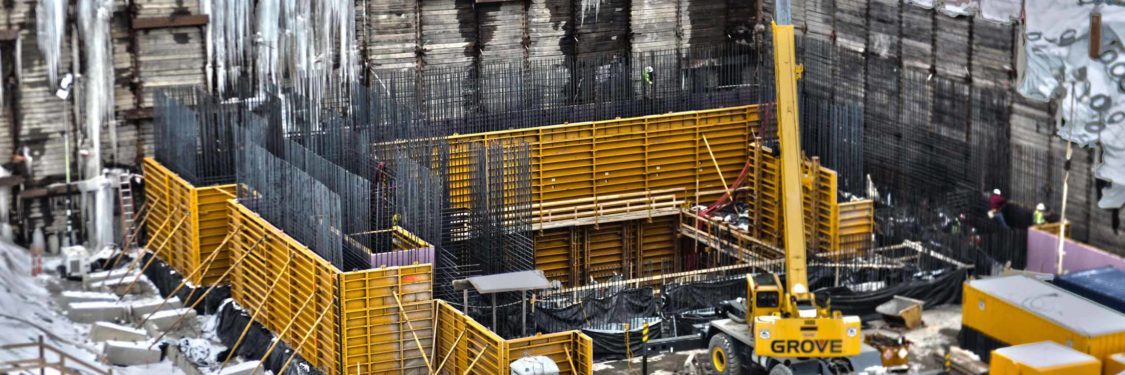Jumbo Bloom Vertical Caster Foundations
Jumbo Bloom Vertical Caster Foundations, Canton, Ohio
LOCATION
Canton, Ohio
Project Highlights
- 95 foot pit excavation from grade
- 26,000 cy of structural concrete
- 3,600 tons of reinforcing steel
- 55 tons of embedded steel
- 120,000 sf of formwork
- Wood lagging and tie-back wall
- Steel H-piling
- Cooling tubes
- Thermal monitoring plan
Project Description
Rising 180 feet above ground and submerged 95 feet below ground for an overall height of 270 feet, the caster is the biggest continuous vertical bloom caster in the world and the only one of its kind in North America. Its advanced clean steelmaking technology is fully automated and designed to operate consistently with process monitoring and control.
The Beaver Excavating Company was awarded two phases of construction in 2012 for the vertical caster including the 95 foot pit excavation from grade and all structural concrete back to existing grade. Excavation of the pit began shortly thereafter to accommodate the aggressive schedule that needed met. The total project called for more than 26,000 cy of structural concrete, approximately 18,000 cy of which was dedicated to the main portion of the caster that included mass concrete pours. The project also included 3,600 tons of reinforcing steel, 55 tons of embedded steel and 120,000 sf of formwork.
Excavation of the caster included a steel H-piling, wood lagging and tie-back wall to maintain existing operations in an adjacent building offset by only 40 feet. Once excavation was complete Beaver Excavating began working on constructing the 95’ below grade caster foundation.
Due to its complexity, which included several pits, hallways, stairs wells, rooms and access walkways and beams, the main structural caster was broken into 10 different pours. On average, each mass concrete pour was broken into 1,500 to 2,000 cy. The concrete was poured at an average rate of 220 cy per hour. Due to the large volume of concrete being poured, cooling tubes were utilized to help maintain the concrete cure temperature.
Beaver utilized a thermal monitoring plan on all concrete mass pours. Part of that plan included cooling tubes that were run throughout the inner workings of the concrete pours. The cooling tubes helped cool the interior temperature of the concrete at a more controlled rate. By doing this, it allowed Beaver to continue to work on the next lift and helped prevent thermal cracks.
At its completion, The Beaver Excavating Company had dedicated almost 110,000 man hours to complete the $22 million project.
Related Projects
Columbus UpGround Water Reservoir-Richwood, Ohio
AES/AEP Power Plant Expansion-Maidsville, WV
ODOT S.R. 8/271 Interchange Reconstruction-Summit County, OH
Tanger Outlet Center-Pittsburgh, PA
Timken Underpass Bridge Construction-Canton, Ohio
ODOT S.R. 58 Railroad Grade Separation-Wellington, Ohio
ODOT US Route 33 Bypass Construction, Phase III-Nelsonville, Ohio
Marysville UpGround Water Reservoir-Marysville, Ohio
ODOT Southern Ohio Veterans Memorial Hwy.-Scioto County, Ohio
Long Lake Dam Improvement-Akron, Ohio


